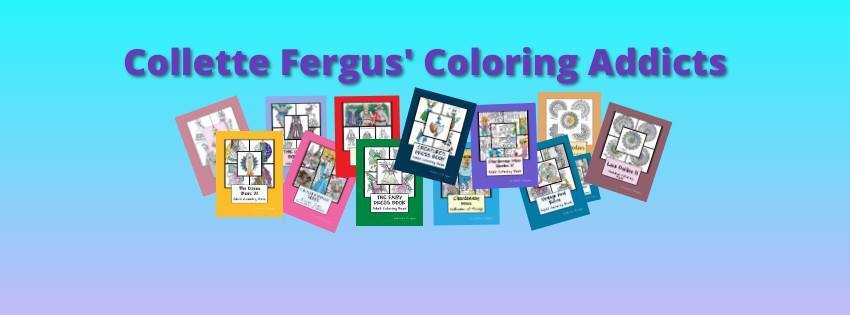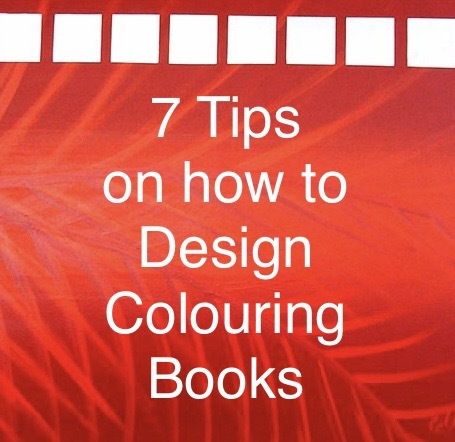7 Tips on how to Design Colouring Books
Remember the craze of colouring in a few years ago? It was huge, wasn't it? The sales of colouring pencils and marker pens soared. A handful of artists led by Johanna Basford, the oracle of colouring books, made very good money out of it.
I don't know about you but as a kid I loved to colour things in. I would spend many hours doing so. I was always in competition with my big sister as to who could colour in the lines better. She usually won now that I think about it!
The fad that we have just seen was built on the stress factor, the need to escape and to take care of our mental wellness.
Life has got tough and the pressures of careers and home life meant we needed some escapism and something simple, quick and non-competitive. Mindfulness matters and adult colouring filled the gap easily.
Have you ever wondered who creates the magical books that teach children to use felts and colored pencils? I know I never thought about it until recently since there were no author titles on the books we coloured as kids, and even if there were, we probably didn't read them. We were captivated by the cute and funny pictures of cats, clowns, and seals balancing balls on their noses.
Could you create a coloring page for kids to colour?
It’s not as easy as it sounds believe it or not. I can see some of you now getting out a sketch pad and having a go! Even if it is only to prove me wrong! And that’s ok, because some of you will get it straight away. Most will be able to understand what I mean. It all depends on your particular drawing skills to be honest.
I came across this situation years ago while we were out somewhere and my kids were bored. All I had at the time were some colouring in pencils and a sketchbook so I thought why not create something they could colour in and set to creating some simple artworks based on things they liked at the time. Over the years I’ve recreated this for other kids in similar situations and of course I got the hang of it with time and experience.
Early in the 2000s, adult colouring books became very popular. At the time I was laid up with breast cancer and unable to paint so I created my first grownup book - 'The Dress Book'. It's full of retro style gowns. You can purchase it by clicking on the image below to visit Amazon

Over the following years I created a whole range of books, a series of the Dress books, another series of Chardonnay Minx books and a few stand alone books like an Easter Egg one and Bras for the Cause. You can see them all on Amazon and purchase from there also.
7 Tips for designing a Colouring Book
As promised here are seven tips to design a colouring book yourself.
These are some of the things you will need to consider-
- Appropriate subject: Depending on the age of the person coloring, you need to pick an appropriate and interesting subject matter. When little Miss girly girl is thinking of her favourite cartoon character or doll, for example, a picture of a toy truck is not likely to impress her.
- Keep it simple: A simple drawing will work best for a child who has a limited attention span and who is unable to color within the lines, while the opposite will keep an older child entertained for much longer and enable them to show off their coloring skills if it has lots of detail.
- Defined spaces, yes I know it seems simple enough but everything needs to be enclosed, you cant have lines going off into space like you would on a standard sketch, everything needs to have a start and a finish, the whole point being that the mini artist needs boundaries for colouring in.
- Keep the lines consistent, don’t be tempted to colour in yourself. If it's bold and well defined it's easier for them to understand where things start and where they finish.
- Use vectors: For a more professional finish or to publish the images, use a vectoring program. This will neaten up the lines. Often, I had to go back into Illustrator and redraw because vectorizing softened the corners too much or left gaps where there wasn't any or they were so microscopic from the original drawing that they didn't show up until this stage. It was time-consuming but worth the effort, especially for my digital colouring fans, because any gaps would make their work more difficult.
- Ask a few people to test colour the images. The chances are that you will discover errors at this point that you weren't aware of. During my first attempts at mandalas I realized I had to make sure there were equal amounts of pieces, as people would alternate colors and find it frustrating to reach the last piece and have it meet with the same colour.
- Self-Publishing, visit kindle.com for help with this. It evolves constantly but it takes you step by step through the process. There are other platforms as well but I found this the easiest.
If this is your thing why not pop over and see my Colouring Fan Group on Facebook. This fan club was created by a group of American fans and my books became popular internationally. Have a look on Amazon for the whole range if you are keen to see what I created and maybe buy one or two as well.
Posted: Monday 12 July 2010
